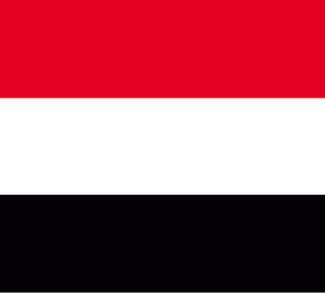Yemeni President Ali Abdullah Saleh’s recent statement that he ‘rejects power’ and will step down in the coming days has become somewhat of a common refrain in recent months. Yet, has the situation on the ground reached the point where, presidential resignation or not, Yemen is headed for civil war?
The geopolitical significance of Yemen is often understated in mainstream media. Situated between Saudi Arabia and Somalia, it occupies the north shore of the crucial Gulf of Aden. It also has the second-highest rate of gun ownership in the world- coming in behind the unbeatable gun-loving behemoth that is the United States. Thus, a breakdown of Yemeni stability could in turn lead to a destabilization of Saudi Arabia in the north just as easily as it could feed into the expanding sphere of al-Shabab influence across the Gulf of Aden. In other words, it would turn into yet another hot zone in the global terror game of ‘whack-a-mole’ that Western military planners are engaged in- and one that would be extremely hard to ‘fix’ using a military option.
Unfortunately, a breakdown in the internal stability of Yemen seems to be exactly what is occurring. A cursory check of Al-Jazeera’s Yemen Blog can tell you all that you need know regarding the extent of ongoing violence. There have been frequent clashes within Sana’a between the Republican Guard that is still loyal to President Saleh and the First Armoured Division that is led by Ali-Mohshen al-Ahmar, a general who has defected and taken up the cause of defending protestors in Change Square. There have also been incidents of government bombing in Taiz, Yemen’s second largest city and home to high concentrations of anti-Saleh protesters.
What’s important to take from the violence is this: It’s an incendiary confluence of extremist elements, fracturing government forces, and powerful elites. This is not a conflict that can be ‘fixed’ by short-term political reforms ala other ‘Arab Spring’ uprisings. There isn’t enough water, oil, or stable government institutions in Yemen to serve as a basis for economic renewal. These problems are deep-set and serious, and what we are now seeing is likely just the prelude for the onset of civil war between the north and south.
From a geopolitical standpoint, the Saudi regime will be hit hardest by anarchy in Yemen. Al Qaeda in the Arabian Peninsula, the Yemen-based branch of Al Qaeda behind the abortive 2009 Christmas Day Bombing, has been quite that its primary goal lies in toppling the Saudi regime in Riyadh. If Yemeni instability were to spread into the Saudi Kingdom and induce a violent response from the government, the Saudi’s could fast find themselves prevailing over their own rash of mass anti-government demonstrations. This would at the very least cause global oil prices to shoot through the roof, if not re-draw the map of the Middle East in a way that savages Western interests in the region.
There is still time to avoid the worst-case scenario in Yemen, but it will take a swift and creative response from international stakeholders. Like so many other countries grappling with home-grown terrorist movements, Yemen needs a political solution that is focused on economic renewal and foreign support. Yemeni corruption needs to be stemmed via political reform before foreign assistance can help mend the arguably more serious problems of dwindling oil reserves and a lack of potable water.
The international community is at a crossroads. There’s still time before Yemen falls into the abyss and Western pundits can comfortably invoke the all-too-common spectre of military intervention once more. But, as is the case with so many problems that require long-term planning to solve, will the window of opportunity slam shut before anyone even realized it was open?




